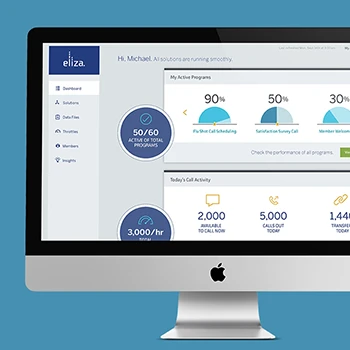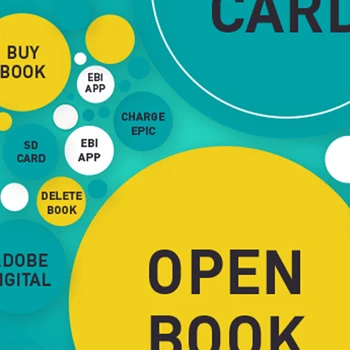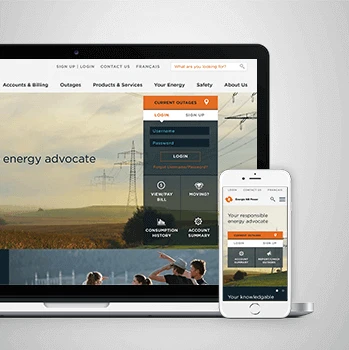What exactly is fractional UX leadership and why do organizations need it?
Fractional UX leadership provides executive-level experience expertise on a part-time basis, typically 3-6-9 months. Organizations use this model to access seasoned UX leadership without full-time commitment, whether filling gaps between permanent hires, launching new initiatives, or navigating complex digital transformations. The approach brings strategic thinking that connects user needs to business outcomes.
Tip: Evaluate candidates based on their ability to integrate UX strategy with business objectives rather than just their design portfolio or years of experience.
How does fractional UX leadership differ from traditional UX consulting?
Traditional consulting often focuses on specific projects or deliverables, while fractional leadership embeds strategic UX thinking into your organization's decision-making processes. Fractional leaders act as part of your leadership team, participating in strategic planning, budget decisions, and organizational development. They bridge the gap between tactical UX work and business strategy.
Tip: Structure the engagement to include participation in executive meetings and strategic planning sessions rather than limiting involvement to UX-specific activities.
What experience level should we expect from a fractional UX leader?
Fractional UX leaders typically bring 10-20 years of experience across multiple industries and organizational contexts. They understand how to navigate complex stakeholder environments, build UX capabilities from the ground up, and integrate user-centered thinking into business strategy. Their Experience Thinking approach connects brand, content, product, and service experiences rather than focusing on individual touchpoints.
Tip: Assess candidates' experience with organizational transformation and change management, not just their design skills or technical expertise.
How do we determine if fractional UX leadership is right for our organization?
Fractional UX leadership works best when you need strategic guidance but aren't ready for a full-time executive hire. It's ideal for organizations launching new products, undergoing digital transformation, or seeking to mature their UX practice. Consider this model if you have UX resources but lack senior leadership to guide strategy and organizational integration.
Tip: Audit your current UX maturity level and identify specific leadership gaps rather than assuming more UX resources will solve strategic challenges.
What types of organizations benefit most from fractional UX leadership?
Mid-stage companies scaling their digital presence, established organizations undergoing transformation, and startups preparing for rapid growth see the greatest benefit. These organizations often have product development capabilities but need strategic UX guidance to align user needs with business goals. Fractional leadership helps bridge the gap between technical execution and market success.
Tip: Consider fractional leadership when your organization has ambitious UX goals but lacks the internal experience to achieve them systematically.
How does fractional UX leadership integrate with existing business strategy?
Effective fractional UX leaders embed user-centered thinking into core business processes rather than treating UX as a separate function. They participate in product roadmap planning, market research initiatives, and competitive strategy discussions. Through the Experience Thinking framework, they help organizations see how user experience decisions impact all aspects of business performance.
Tip: Ensure the fractional leader has access to business metrics and strategy documents to align UX initiatives with broader organizational objectives.
What strategic outcomes can we expect from fractional UX leadership?
Strategic outcomes include improved user satisfaction scores, reduced customer acquisition costs, increased product adoption rates, and stronger competitive positioning. More importantly, fractional UX leadership builds organizational capabilities that sustain these improvements beyond the engagement period. The focus shifts from delivering designs to building design thinking capabilities across your organization.
Tip: Define success metrics that measure organizational capability development alongside traditional UX performance indicators.
What does a typical fractional UX leadership engagement look like?
A typical engagement runs 3-6 months with 2-3 days per week commitment. The fractional leader assesses current state, develops strategic roadmaps, mentors internal staff, and establishes processes for sustainable UX practice. They balance hands-on guidance with knowledge transfer to ensure organizational capability continues after their departure.
Tip: Plan for knowledge transfer activities from the beginning rather than treating them as end-of-engagement tasks to maximize organizational learning.
How do we structure the working relationship with a fractional UX leader?
Structure the relationship with clear reporting lines, typically to the CEO, CTO, or Head of Product. Establish regular touchpoints with key stakeholders and define decision-making authority for UX-related initiatives. The fractional leader should participate in executive meetings and have access to strategic planning processes to provide maximum value.
Tip: Create formal communication channels and meeting cadences rather than relying on ad-hoc interactions to ensure consistent strategic alignment.
What time commitment should we expect from fractional UX leadership?
Time commitments typically range from 8-24 hours per week, depending on organizational needs and engagement scope. Some weeks may require more intensive involvement during critical periods like product launches or strategic planning sessions. The key is consistent, reliable access to strategic guidance rather than full-time availability.
Tip: Plan for flexible time allocation that can scale up during critical decision points rather than expecting consistent weekly hours.
How do we onboard a fractional UX leader effectively?
Effective onboarding includes comprehensive stakeholder introductions, access to existing research and design assets, understanding of business metrics and goals, and clarity about organizational culture and constraints. The fractional leader needs context about past UX initiatives, current challenges, and future aspirations to provide strategic guidance.
Tip: Prepare a comprehensive stakeholder map and provide access to historical UX documentation to accelerate the fractional leader's understanding of your organizational context.
What happens when the fractional UX leadership engagement ends?
Successful engagements conclude with sustainable systems, processes, and capabilities that continue without ongoing fractional support. The leader typically provides transition documentation, trains internal staff on established processes, and may offer limited ongoing advisory support. The goal is organizational independence rather than continued dependence.
Tip: Plan the transition strategy at engagement start and allocate time for systematic knowledge transfer rather than expecting informal handoffs to be sufficient.
Can fractional UX leadership extend beyond the initial engagement?
Extensions work well when organizations want to tackle additional strategic initiatives or need support during growth phases. The relationship can evolve into ongoing advisory support with reduced time commitment. Some organizations prefer periodic intensive engagements rather than continuous fractional involvement to address specific challenges as they arise.
Tip: Evaluate extension opportunities based on new strategic needs rather than convenience or comfort with the existing relationship.
How do we measure success during a fractional UX leadership engagement?
Success metrics include both immediate deliverables and capability development indicators. Track user experience improvements, team skill development, process implementation, and strategic alignment achievements. The most important measures are organizational capabilities that enable continued UX excellence after the fractional leader transitions.
Tip: Establish both quantitative metrics and qualitative indicators that reflect organizational capability growth rather than just project completion.
What is the Experience Thinking framework and how does it apply to leadership?
Experience Thinking is our holistic framework that addresses brand, content, product, and service experiences as interconnected elements rather than isolated components. Fractional UX leaders use this framework to guide strategic decisions, ensuring all customer touchpoints work together cohesively. It shifts focus from optimizing individual experiences to orchestrating complete experience ecosystems.
Tip: Map your current customer touchpoints across all four Experience Thinking quadrants to identify strategic gaps and integration opportunities.
How does Experience Thinking differ from traditional design thinking approaches?
While design thinking focuses on problem-solving for specific challenges, Experience Thinking addresses the connected reality of how people interact with organizations across all touchpoints. It recognizes that users evolve from customers to users to loyal clients throughout their journey. This framework guides strategic decisions about resource allocation and experience investment priorities.
Tip: Assess your current design processes against the four Experience Thinking dimensions to identify areas where disconnected efforts might be limiting overall impact.
What frameworks do fractional UX leaders use for organizational assessment?
Fractional leaders use maturity assessment frameworks that evaluate UX capabilities across strategy, research, design, testing, and implementation. They analyze team structures, processes, tools, and culture to identify improvement opportunities. The Experience Thinking framework provides a holistic lens for understanding how different organizational capabilities connect to create exceptional experiences.
Tip: Complete an internal UX maturity assessment before engaging fractional leadership to identify specific areas where strategic guidance will have the greatest impact.
How do fractional UX leaders approach experience strategy development?
Experience strategy development begins with understanding business objectives, user needs, and market context through the Experience Thinking framework. Leaders map current state capabilities across brand, content, product, and service experiences, identify strategic opportunities, and create roadmaps that align user value with business outcomes. The approach emphasizes connected experiences rather than isolated improvements.
Tip: Prepare comprehensive user research, business metrics, and competitive analysis to enable strategic experience planning rather than tactical design improvements.
What role does foresight design play in fractional UX leadership?
Foresight design anticipates future user needs, technological changes, and market evolution to create solutions that remain relevant over time. Fractional UX leaders use foresight design principles to build adaptive capabilities rather than just solving current problems. This forward-thinking approach helps organizations invest in experience foundations that scale with growth and market changes.
Tip: Allocate specific resources for future-state experience exploration rather than focusing exclusively on immediate user interface improvements.
How do fractional UX leaders handle complex, multi-stakeholder environments?
Complex stakeholder environments require sophisticated facilitation skills and frameworks that align diverse perspectives around user value. Fractional leaders use Experience Thinking to demonstrate how different stakeholder priorities connect through shared experience outcomes. They establish collaborative processes that leverage stakeholder expertise while maintaining user-centered decision-making.
Tip: Map stakeholder interests and influence before introducing fractional leadership to identify potential alignment opportunities and resistance points.
What methodologies do fractional UX leaders use for rapid organizational change?
Rapid change methodologies include Design Tracks that scale from 2-day Steps to 12-week Relays, depending on the complexity and scope of challenges. These approaches balance exploration with delivery, ensuring organizations can experiment with new approaches while maintaining operational effectiveness. The methodology adapts to organizational constraints while building change capabilities.
Tip: Start with smaller-scope Design Steps to demonstrate value and build organizational confidence before committing to larger transformation initiatives.
How does fractional UX leadership work with existing design and product people?
Fractional leaders act as mentors and strategic guides rather than replacing existing capabilities. They assess current skills, identify development opportunities, and create growth pathways for existing staff. The approach emphasizes capability building and strategic thinking development rather than taking over tactical design work.
Tip: Communicate the developmental nature of fractional leadership to existing people to reduce anxiety and encourage collaboration rather than competition.
What happens if our internal people resist fractional UX leadership?
Resistance often stems from unclear expectations or concerns about job security. Successful fractional leaders address resistance through transparency about their role, demonstrating value through collaborative problem-solving, and focusing on capability development rather than critique. They build trust by elevating internal people rather than competing with them.
Tip: Address resistance concerns directly through clear communication about the developmental and temporary nature of fractional leadership rather than hoping resistance will naturally disappear.
How do we balance fractional leadership with internal people development?
The best balance involves fractional leaders mentoring internal people while handling strategic responsibilities that exceed current internal capabilities. This approach accelerates internal development while ensuring strategic guidance quality. The fractional leader creates learning opportunities rather than creating dependency relationships.
Tip: Create explicit mentoring relationships and skill development plans rather than expecting professional development to happen automatically through proximity.
What skills should our internal people develop during fractional UX leadership?
Internal people should develop strategic thinking, stakeholder management, business alignment, and experience architecture capabilities. Through the Experience Thinking framework, they learn to connect brand, content, product, and service experiences rather than focusing on individual design deliverables. The goal is building organizational experience strategy capabilities.
Tip: Create formal skill development tracking and provide dedicated time for learning activities rather than expecting skill development to happen within existing workloads.
How does fractional UX leadership help build internal UX culture?
Culture development happens through demonstrating user-centered decision-making processes, celebrating experience thinking successes, and creating rituals that reinforce experience-focused values. Fractional leaders model behaviors that connect user needs to business outcomes, helping organizations develop sustainable experience-centered practices.
Tip: Focus culture development on behavior changes and decision-making processes rather than just awareness and education activities.
What if our current people lack the skills for advanced UX work?
Skill gaps are addressed through strategic hiring, targeted training, and capability development programs. Fractional leaders assess current capabilities against strategic needs and create development roadmaps that build required competencies. Some situations may require strategic hiring decisions to achieve ambitious experience goals.
Tip: Conduct honest capability assessments and invest in strategic hiring rather than expecting existing people to develop advanced skills quickly through training alone.
How do we maintain momentum after fractional UX leadership ends?
Momentum sustainability requires establishing processes, decision-making frameworks, and success metrics that continue without ongoing fractional support. The Experience Thinking approach becomes embedded in how the organization approaches all customer touchpoints. Internal people gain confidence and capability to continue strategic experience development independently.
Tip: Build internal coaching and mentoring capabilities rather than relying solely on processes and documentation to maintain experience thinking practices.
What return on investment can we expect from fractional UX leadership?
Organizations typically see 300-500% ROI through improved user satisfaction, reduced development costs, faster time-to-market, and increased customer lifetime value. More importantly, fractional leadership builds capabilities that continue generating value long after the engagement ends. The investment creates lasting competitive advantages through better experience strategy capabilities.
Tip: Track both immediate performance improvements and organizational capability development to measure total investment return rather than just short-term metrics.
How does fractional UX leadership impact product development timelines?
Initial strategic planning may extend upfront timelines, but overall development accelerates through better requirements definition, reduced rework, and aligned stakeholder expectations. The Experience Thinking approach prevents disconnected development efforts that require extensive integration work later. Long-term development efficiency improves significantly.
Tip: Measure development efficiency over complete product lifecycles rather than individual sprint or project timelines to understand true impact.
What business metrics typically improve with fractional UX leadership?
Common improvements include user acquisition cost reduction, customer satisfaction score increases, product adoption rate improvements, and customer support ticket decreases. More strategic benefits include improved competitive positioning, clearer product-market fit, and stronger customer loyalty. The Experience Thinking framework helps organizations understand how experience quality connects to business performance.
Tip: Establish baseline measurements across multiple business metrics rather than focusing only on traditional UX metrics like usability scores.
How does fractional UX leadership affect our competitive position?
Strategic UX leadership typically strengthens competitive position through differentiated user experiences, improved customer loyalty, and faster innovation cycles. Organizations develop capabilities to anticipate user needs and market changes rather than just responding to competitive moves. The Experience Thinking approach creates distinctive value propositions that are difficult for competitors to replicate.
Tip: Conduct competitive experience analysis to understand your differentiation opportunities rather than just feature comparisons.
What risks are involved with fractional UX leadership investments?
Primary risks include cultural misfit between the fractional leader and organization, unrealistic timeline expectations, and insufficient internal support for recommended changes. The greatest risk is treating fractional leadership as a quick fix rather than strategic capability development. Proper vetting and clear expectations management minimize these risks.
Tip: Evaluate cultural fit and change readiness alongside technical qualifications when assessing fractional leadership candidates.
How do we justify fractional UX leadership investment to executive stakeholders?
Justification focuses on competitive advantage, market opportunity, and risk mitigation rather than just cost savings. Demonstrate how user experience quality affects customer acquisition, retention, and lifetime value. The Experience Thinking framework helps executives understand how experience strategy connects to business strategy and performance outcomes.
Tip: Present business cases that connect experience improvements to revenue impact and competitive positioning rather than just operational efficiency gains.
What long-term business benefits should we expect from this investment?
Long-term benefits include sustainable competitive advantages through superior customer experiences, organizational capabilities that enable rapid market response, and strategic thinking that connects user value to business outcomes. The Experience Thinking approach becomes embedded in how your organization approaches innovation and market opportunities.
Tip: Plan for capability measurement and organizational learning tracking to understand long-term investment returns beyond immediate project outcomes.
What organizational capabilities does fractional UX leadership help develop?
Fractional leadership develops strategic experience planning, user research operations, design system governance, and cross-functional collaboration capabilities. Through the Experience Thinking framework, organizations learn to orchestrate brand, content, product, and service experiences as integrated systems rather than separate initiatives. These capabilities enable sustained competitive advantage.
Tip: Assess your organization's current capability gaps before engagement to focus development efforts on areas with greatest strategic impact.
How does fractional UX leadership improve our design and research processes?
Process improvements include establishing user research programs, implementing design system governance, creating cross-functional collaboration workflows, and developing decision-making frameworks that prioritize user value. The focus shifts from ad-hoc design activities to systematic experience strategy implementation that scales with organizational growth.
Tip: Document existing processes before fractional engagement to measure improvement impact and ensure knowledge transfer effectiveness.
What knowledge transfer happens during fractional UX leadership engagements?
Knowledge transfer includes strategic frameworks, assessment methodologies, process templates, and decision-making criteria that enable continued strategic experience development. The Experience Thinking approach becomes part of how your organization evaluates opportunities and makes experience-related investments. Internal people gain capabilities to continue strategic work independently.
Tip: Plan for systematic knowledge documentation and internal training sessions rather than expecting informal knowledge transfer to be sufficient.
How do we build internal UX leadership capabilities for the future?
Internal leadership development includes mentoring high-potential people, creating leadership development pathways, and establishing decision-making frameworks that develop strategic thinking skills. Fractional leaders identify internal candidates for advancement and create development opportunities that build experience strategy capabilities within your organization.
Tip: Identify internal leadership candidates early in the engagement and create formal development plans rather than hoping leadership skills will develop naturally.
What training and development support does fractional UX leadership provide?
Training support includes strategic frameworks education, hands-on process coaching, cross-functional collaboration skill development, and experience strategy planning capabilities. The approach emphasizes practical application rather than theoretical knowledge, ensuring internal people can apply new capabilities immediately to real organizational challenges.
Tip: Balance formal training with practical application opportunities to accelerate capability development and ensure skill retention.
How does fractional UX leadership help us scale our UX practice?
Scaling support includes establishing hiring criteria, creating onboarding processes, developing career advancement pathways, and implementing governance frameworks that maintain quality while enabling growth. The Experience Thinking approach provides systematic methods for expanding UX capabilities across different business areas and product lines.
Tip: Plan scaling strategies based on business growth projections rather than current resource constraints to ensure UX capabilities keep pace with organizational needs.
What capabilities help us maintain UX excellence after fractional leadership ends?
Sustainable excellence requires internal coaching capabilities, continuous learning systems, performance measurement frameworks, and cultural practices that reinforce experience-centered decision-making. The Experience Thinking framework becomes embedded in how your organization approaches all customer touchpoints and strategic decisions.
Tip: Develop internal mentoring and coaching capabilities rather than relying solely on processes and documentation to maintain experience thinking practices.
How does AI impact fractional UX leadership and what should we expect?
AI enhances fractional UX leadership through accelerated research analysis, pattern identification, and design exploration capabilities. However, strategic thinking, stakeholder relationship building, and experience architecture decisions remain fundamentally human capabilities. Fractional leaders help organizations understand where AI augments UX work versus where human judgment remains essential for complex experience strategy.
Tip: Focus AI implementation on data analysis and pattern recognition tasks while maintaining human oversight for strategic experience decisions and stakeholder relationship management.
What role does foresight design play in building future-ready organizations?
Foresight design helps organizations anticipate technological changes, evolving user expectations, and market shifts that will impact experience strategy. Fractional leaders use foresight design principles to build adaptive capabilities rather than just solving current problems. This approach creates experience foundations that remain relevant through technological and market evolution.
Tip: Allocate dedicated resources for future-state experience exploration and emerging technology experimentation rather than focusing exclusively on immediate optimization needs.
How do we prepare our organization for evolving UX landscape changes?
Preparation involves building adaptive capabilities, establishing learning systems, and creating innovation frameworks that enable rapid response to market changes. The Experience Thinking approach provides stable strategic foundations while enabling flexibility in tactical implementation. Organizations develop capabilities to anticipate and respond to user expectation evolution.
Tip: Create dedicated capacity for trend monitoring and emerging technology experimentation rather than trying to integrate innovation into existing operational workflows.
What emerging technologies should fractional UX leaders help us evaluate?
Technology evaluation focuses on user impact potential rather than technical novelty. Fractional leaders help organizations assess voice interfaces, AR/VR applications, AI-powered personalization, and other emerging technologies through experience strategy lens. The goal is identifying technologies that enhance user value rather than adopting technology for its own sake.
Tip: Evaluate emerging technologies based on user value creation potential and strategic fit rather than competitive pressure or technology novelty alone.
How does fractional UX leadership address changing user expectations?
Changing expectations are addressed through systematic user research programs, trend analysis capabilities, and adaptive design systems that enable rapid response to user behavior evolution. The Experience Thinking framework helps organizations understand how expectation changes across brand, content, product, and service touchpoints require coordinated responses.
Tip: Establish ongoing user expectation monitoring systems rather than relying on periodic research to understand user behavior evolution.
What capabilities do we need for long-term UX strategy success?
Long-term success requires strategic planning capabilities, adaptive design systems, continuous learning frameworks, and innovation management processes that enable sustained competitive advantage. The Experience Thinking approach provides systematic methods for connecting user value creation to business strategy across changing market conditions.
Tip: Build strategic planning capabilities that integrate UX thinking with business strategy rather than treating experience strategy as a separate organizational function.
How do we measure readiness for future UX challenges and opportunities?
Readiness measurement includes capability maturity assessments, innovation pipeline evaluation, learning system effectiveness, and adaptive capacity indicators. Organizations track their ability to anticipate user needs, respond to market changes, and integrate new technologies effectively. The Experience Thinking framework provides comprehensive evaluation criteria across all experience dimensions.
Tip: Create forward-looking measurement systems that track adaptive capabilities rather than just current performance metrics to understand future readiness.












